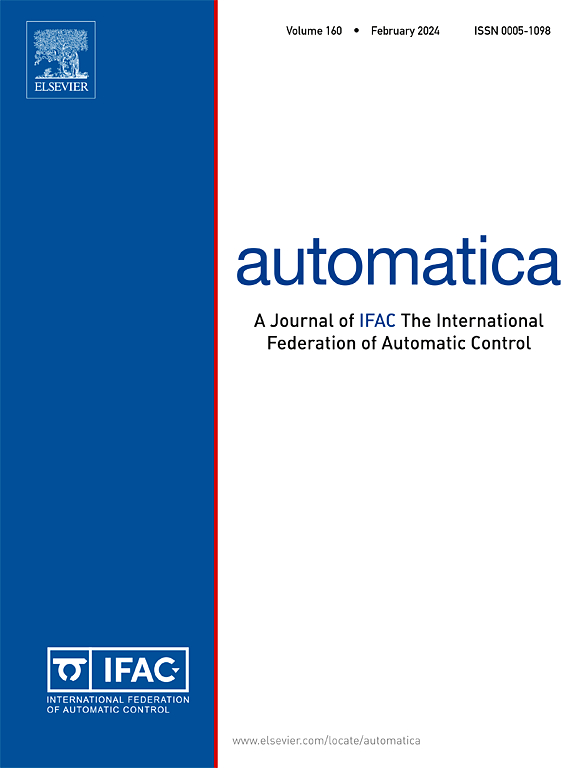Reducing real-time complexity via sub-control Lyapunov functions: From theory to experiments
IF 5.9
2区 计算机科学
Q1 AUTOMATION & CONTROL SYSTEMS
引用次数: 0
Abstract
The techniques to design control Lyapunov functions (CLF), along with a proper stabilizing feedback, possibly in the presence of constraints, often provide control laws that are too complex for proper implementation online, especially when an optimization problem is involved. In this work, we show how to acquire an alternative, computationally attractive feedback. Given a nominal CLF and a nominal state feedback, we say that a different positive definite function is a Sub-control Lyapunov function (SCLF) if its Lyapunov derivative is negative-definite and bounded above by the Lyapunov derivative of the nominal function with the nominal control. It turns out that if we consider a family of basis functions, then an SCLF can be computed by linear programming, with an infinite number of constraints. The idea is that although the offline computational burden to achieve the new controller and solve the linear program is considerable, the online computational burden is drastically reduced. Comprehensive simulations and experiments on drone control are conducted to demonstrate the effectiveness of the study.
通过子控制Lyapunov函数降低实时复杂性:从理论到实验
设计控制Lyapunov函数(CLF)的技术,以及适当的稳定反馈,可能在存在约束的情况下,通常提供的控制律过于复杂,无法在线正确实现,特别是当涉及优化问题时。在这项工作中,我们展示了如何获得另一种计算上有吸引力的反馈。给定一个标称的CLF和一个标称的状态反馈,如果一个不同的正定函数的Lyapunov导数是负定的,并且以标称控制的标称函数的Lyapunov导数为界,我们说它是一个子控制Lyapunov函数(SCLF)。结果是,如果我们考虑一组基函数,那么一个SCLF可以通过线性规划来计算,有无限个约束条件。其思想是,尽管实现新控制器和求解线性程序的离线计算负担相当大,但在线计算负担大大减少。对无人机控制进行了全面的仿真和实验,验证了研究的有效性。
本文章由计算机程序翻译,如有差异,请以英文原文为准。
求助全文
约1分钟内获得全文
求助全文
来源期刊

Automatica
工程技术-工程:电子与电气
CiteScore
10.70
自引率
7.80%
发文量
617
审稿时长
5 months
期刊介绍:
Automatica is a leading archival publication in the field of systems and control. The field encompasses today a broad set of areas and topics, and is thriving not only within itself but also in terms of its impact on other fields, such as communications, computers, biology, energy and economics. Since its inception in 1963, Automatica has kept abreast with the evolution of the field over the years, and has emerged as a leading publication driving the trends in the field.
After being founded in 1963, Automatica became a journal of the International Federation of Automatic Control (IFAC) in 1969. It features a characteristic blend of theoretical and applied papers of archival, lasting value, reporting cutting edge research results by authors across the globe. It features articles in distinct categories, including regular, brief and survey papers, technical communiqués, correspondence items, as well as reviews on published books of interest to the readership. It occasionally publishes special issues on emerging new topics or established mature topics of interest to a broad audience.
Automatica solicits original high-quality contributions in all the categories listed above, and in all areas of systems and control interpreted in a broad sense and evolving constantly. They may be submitted directly to a subject editor or to the Editor-in-Chief if not sure about the subject area. Editorial procedures in place assure careful, fair, and prompt handling of all submitted articles. Accepted papers appear in the journal in the shortest time feasible given production time constraints.
 求助内容:
求助内容: 应助结果提醒方式:
应助结果提醒方式:


